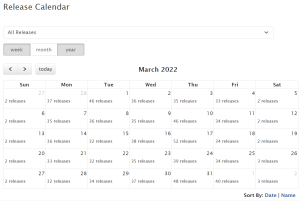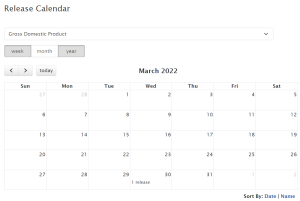Measures of inflation are some of the most popular data series on FRED. Two of the most important ones are the consumer price index (CPI), constructed by the Bureau of Labor Statistics (BLS) in the Department of Labor, and the personal consumption expenditures price index (PCE), constructed by the Bureau of Economic Analysis (BEA) in the Department of Commerce.
The CPI is probably the most widely watched measure of inflation and is used for many purposes, such as indexing Social Security payments. The Federal Open Market Committee (FOMC) has been looking at the PCE price index since the 1990s, however, and made that index the measure for its official inflation target in January 2012, when they introduced an official target.
To understand how the CPI and PCE inflation rates differ, consider a stylized representation of a price index for the year 2023 as the weighted sum of the prices of three types of goods, which we will call goods 1, 2, and 3.
P2023=w1,2023 p1,2023+w2,2023 p2,2023+w3,2023 p3,2023
The weights, w, represent how much money is spent on each good in the consumption basket. For example, gasoline would get a higher weight in a consumer price index than shoelaces. As relative prices, technology, or people’s tastes change, the weights in the baskets change.
Both the CPI and PCE are constructed in this general way, as the weighted averages of prices of various goods, but they differ.
- The two price indices measure somewhat different baskets of goods: The CPI is designed to measure the cost of living for an urban consumer, while the PCE measures a broader cost of living. Because of this difference in emphasis, the weights in the baskets differ and the CPI famously places more emphasis on the cost of housing.
- The weights in the CPI basket aren’t revised as often as those in the PCE basket, meaning that the PCE probably better measures consumer responses to rapidly changing relative prices.
The FRED graph above shows that monthly CPI (blue line) and PCE (red line) inflation move closely together, but the CPI generally exceeds the PCE. Over the full sample since 1960, the arithmetic average of 12-month CPI inflation was 3.77% and the standard deviation—a measure of volatility— of that series was 2.83%. The analogous figures for the PCE price index inflation were 3.31% and 2.43%. That is, the CPI inflation rate was 0.46% higher on average and somewhat more volatile. The fact that the PCE weights are revised more often than the CPI weights helps explain the higher average CPI inflation because consumers tend to substitute away from products whose prices rise sharply and the PCE index more quickly reflects such behavior.
The purple line on the FRED graph shows the difference between the CPI and PCE inflation rates, with an average value of 0.46%. This difference is almost always positive but small, usually in the range of 0 to 1%, but it does increase with overall inflation rates.
One component that may also help depict the difference between these two price indexes is annual inflation in “imputed rental of owner-occupied housing.” Shown by the green line, this is basically what a homeowner would have to pay to live in the house if they were renting it. Since CPI has higher weights for housing, this imputed rent should contribute much more to the CPI than the PCE. And it does seem to be correlated with the overall difference between the CPI and PCE inflation rates (purple line), but saying any more would require more careful analysis.
How this graph was created: On FRED, search for and select “CPI.” From the “Edit Graph” panel, change “Units” from “Index” to “Percent Change from Year Ago.” With the “Add line” option, search for “PCE” and select “Personal Consumption Expenditures: Chain-type Price Index,” then click “Add data series.” Repeat for “imputed rent,” selecting “Imputed rental of owner-occupied housing.” Add a line again, with the CPI and PCE series and apply formula a-b. Toward the top of the editing box, select “Percent Change from Year Ago” in the “Units” box and select “Copy to all.” Adjust the sample period to start on 1960-01-01.
Suggested by Christopher Neely.




